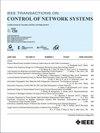通过能量分配优化网络物理系统的 DoS 攻击策略
IF 4
3区 计算机科学
Q2 AUTOMATION & CONTROL SYSTEMS
引用次数: 0
摘要
本文章由计算机程序翻译,如有差异,请以英文原文为准。
Optimal DoS Attack Strategy for Cyber-Physical Systems via Energy Allocation
The energy allocation problem of malicious denial-of-service (DoS) attacks for state estimation in cyber-physical systems (CPSs) is investigated in this article. An optimal energy allocation strategy for DoS attacks in CPSs under multisensor network fusion estimation is proposed. To describe the channel packet loss characteristic, a signal-to-interference-plus-noise ratio model is introduced. Compared with the existing DoS attack strategies, the increase in channel packet loss rate with the increase in energy injected by the attacker is considered. Meanwhile, the behavioral tendency of the attacker concerning the sensors with different parameters is taken into account, leveraging the additional sensing accuracy matrix. Moreover, the quantified relationship between the attacker and the remote estimator error covariance is derived, and the optimal energy allocation strategy problem is transformed into a convex optimization problem to be solved. Finally, a simulation example is presented to verify the effectiveness of the proposed mechanism.
求助全文
通过发布文献求助,成功后即可免费获取论文全文。
去求助
来源期刊

IEEE Transactions on Control of Network Systems
Mathematics-Control and Optimization
CiteScore
7.80
自引率
7.10%
发文量
169
期刊介绍:
The IEEE Transactions on Control of Network Systems is committed to the timely publication of high-impact papers at the intersection of control systems and network science. In particular, the journal addresses research on the analysis, design and implementation of networked control systems, as well as control over networks. Relevant work includes the full spectrum from basic research on control systems to the design of engineering solutions for automatic control of, and over, networks. The topics covered by this journal include: Coordinated control and estimation over networks, Control and computation over sensor networks, Control under communication constraints, Control and performance analysis issues that arise in the dynamics of networks used in application areas such as communications, computers, transportation, manufacturing, Web ranking and aggregation, social networks, biology, power systems, economics, Synchronization of activities across a controlled network, Stability analysis of controlled networks, Analysis of networks as hybrid dynamical systems.
 求助内容:
求助内容: 应助结果提醒方式:
应助结果提醒方式:


